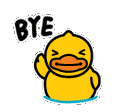Human Society and Climate Change: The role of Human Society in Altering the Atmosphere and Initiating Climate Change: Burning of Fossil Fuels.
DATE: Saturday 18th November, 2023.
Electricity Generation
Ø Residential and commercial electronic devices and appliances, heating and cooling systems, telecommunication networks, etc. mostly utilize fossil fuels that are combusted to generate electricity. According to Eurostat (2022), though fossil fuel use seems to be decreasing in the generation of electricity in the European Union (EU), it continues to be the main source to power electrical grids.
According to Kazmeyer (2018), CO2 has risen by approximately 38% since the
1750s, whereas CH4 has increased by 148% in the same
period. The aforementioned anthropogenic activities account for over 75%
of global greenhouse gases emitted into the atmosphere, where CO2 contributes
to 90% of those gases (Ritchie, Rosado and Roser 2020). As such, these gases warm ocean, air and land
surfaces by trapping solar radiation heat, altering atmospheric conditions by causing global warming
and impacting global climate and weather patterns (BBC 2023). This is seen through severe natural disasters, drought, tornados,
wildfires and even snow melt due to a decrease in the albedo effect.

Diagram 2: Portrayal of how anthropogenic actions leave fingerprints to influence climate change.
Source: Thoughtscapism 2015 (thoughtcapism.com).
Ø Additionally, the burning of fossil fuels damages the ozone layer and atmosphere. This essential layer protects the atmosphere from harmful ultraviolet radiation (UV); however, greenhouse gases for instance, chlorofluorocarbons (CFCs), hydrofluorocarbons (HFCs) and nitrogen oxides (NOx), react with ozone molecules to break them down and trap heat entering the Earth's atmosphere. These gases are typically released through air-conditioning (A.C) units, refrigerants, aerosols and biomass burning by humans. In accordance with Cole and McCarthy (2015), 2014 was reported as the hottest/warmest year since the 1880s, indicating excess release of greenhouse gases has contributed to this rise in temperature. As such, the size of the ozone layer decreases as UV rays absorb and retain heat penetrating the atmosphere, especially in urban areas as it contains a high percentage of impervious surfaces, amplifying global warming. Crop failure, skin cancer, animal death and even eye damage are also resultant of the ozone layer reducing in size due to negligible human actions upon the atmosphere (EESM 2019).
Ø Moreover, fossil fuel burning results
in acid rain. The release of sulfur oxides (SO2) and nitrogen
oxides (NOx) into the atmosphere, pollutants which react with
oxygen, water, etc., forms nitric and sulfuric acid. Winds then spread these
acidic substances through the atmosphere, increasing air pollution, to
eventually fall on the ground as fog, snow and in most instances, rain. Acid rain significantly affects aquatic and land flora, fauna and humans through lowering soil and water pH levels, threatening human and animal
health, damaging forests and destroying monuments and buildings (USEPA,
n.d.).
This marks the end of the blog everyone 😭
I hope it was an enjoyable and informative ride as we journeyed through the world of Climate and Environmental Change in the Quaternary period 🤗
Farewell everyone!!!
This was Simply Quaternary 👋😊
REFERENCES
- Bloomberg News. 2016. “North China City Halts Pharma, Steel Plants to Curb Pollution.” Accessed November 16, 2023. https://www.bloomberg.com/news/articles/2016-11-21/north-china-city-halts-pharma-steel-plants-to-curb-pollution#xj4y7vzkg.
British Broadcasting Corporation (BBC). 2023. “How has the Earth's atmosphere changed over time, and why?” Accessed November 17, 2023. https://www.bbc.co.uk/bitesize/guides/z82gng8/revision/6.
- Cole, Steve and Leslie McCarthy. 2015. “2014 warmest year in modern record.” NASA. Accessed November 18, 2023. https://climate.nasa.gov/news/2221/2014-warmest-year-in-modern-record/.
- Cool Gif Images. 2020. “Acid Rain Animated Gif.” Accessed November 17, 2023. https://cool-gifimages.blogspot.com/2020/01/acid-rain-animated-gif.html.
- Earth and Environmental Systems Modelling (EESM). 2019. “Impacts of Human-Earth System Interactions.” U.S. Department of Energy. Accessed November 14, 2023. https://climatemodeling.science.energy.gov/research-highlights/impacts-human-earth-system-interactions.
- Eurostat. 2022. “Fossil fuels led in electricity generation in 2021.” Accessed November 18, 2023. https://ec.europa.eu/eurostat/web/products-eurostat-news/-/ddn-20220630-1.
- Hall, Melanie. 2016. “Banning the 'super' greenhouse gas.” Deutsche Welle. Accessed November 17, 2023. https://www.dw.com/en/banning-the-super-greenhouse-gas/a-36044849.
- Kazmeyer,
Milton.
2018. “Human Impact on the Earth's Atmosphere.” Leaf Group Ltd. Accessed
November 12, 2023. https://sciencing.com/human-impact-earths-atmosphere-3677.html.
- National Geographic Society. 2023. “Climate Change.” Accessed November 13, 2023. https://education.nationalgeographic.org/resource/climate-change/.
- Ritchie,
Hannah, Pablo Rosado, and Max Roser. 2020. “Greenhouse gas emissions.” Our World in Data.
Accessed November 15, 2023. https://ourworldindata.org/greenhouse-gas-emissions.
- Slide Share. 2008. “Acid Rain.” Accessed November 17, 2023. https://www.slideshare.net/chestertoncc/acid-rain-330436.
- Skafs. 2023. “What is Smart City?” Accessed November 17, 2023. https://skafs.com/smartcity.php.
- TriniTransit. 2014. “Urban Transit in Trinidad.” Accessed November 17, 2023. https://trinitransit.blogspot.com/.
- Thoughtscapism. 2015. “How Does CO₂ Warm the Earth?” Accessed November 17, 2023. https://thoughtscapism.com/2015/05/19/how-does-co%E2%82%82-warm-the-earth/.
- Turrentine, Jeff. 2022. “What Are the Causes of Climate Change?” NRDC. Accessed November 12, 2023. https://www.nrdc.org/stories/what-are-causes-climate-change#natural.
- United States Environmental Protection Agency (USEPA). n.d. “What Causes Acid Rain?” Accessed November 15, 2023. https://www3.epa.gov/acidrain/education/site_students/whatcauses.html.
- Vincent, Loyse. 2021. “THA officials say new ferries will be well maintained.” Trinidad and Tobago Guardian. Accessed November 16, 2023. https://guardian.co.tt/news/tha-officials-say-new-ferries-will-be-well-maintained-6.2.1273438.298d2e4d1d.
- World Health Organization (W.H.O.). 2023. “Climate Change and Health.” accessed November 17, 2023. https://www.who.int/teams/environment-climate-change-and-health/climate-change-and-health/capacity-building/toolkit-on-climate-change-and-health/trainings.












Comments
Post a Comment